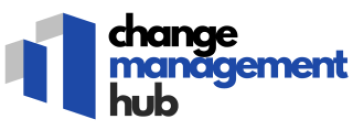
Understanding IT Audit Services
Essential Insights into IT Audit Services
In the ever-evolving world of business and technology, IT audit services have emerged as a cornerstone for enhancing organizational resilience. These services offer an in-depth evaluation of your company's technology infrastructure, providing vital insights into various facets such as security, compliance, and risk management. Investing in IT audit services helps companies navigate the complexities of regulatory requirements, ensuring adherence to necessary policies and procedures. IT audit services encompass a comprehensive assessment of both software and systems within an organization. This includes evaluating internal controls and performing meticulous code audits for quality assurance. Such evaluations help identify vulnerabilities that could potentially compromise cybersecurity, thereby enabling the implementation of effective controls. Additionally, penetration testing and similar assessments offer a proactive approach in maintaining a robust security posture. The internal audit process delves deeper by analyzing the company's internal controls and risk management strategies. It plays a pivotal role in aligning the company's IT strategies with business goals, ensuring both long-term sustainability and resilience in the face of change. Internal audits also provide a platform for continuous monitoring and improvement, enhancing the overall effectiveness of technology audit processes. A strategic approach to IT audits provides assurance services that are crucial for business continuity and security. In particular, performing regular security audits can unveil hidden risks and streamline the adoption of best practices, reinforcing an organization's capability to adapt to changes efficiently. With expertise in auditing, companies can mitigate potential risks, ensuring their information and data remain secure. For a deeper dive into how IT audits support corporate strategies, and how they can influence corporate social responsibility investments, explore the influence of managerial pessimism on these investments.The Role of IT Audits in Change Management
IT Audits as a Catalyst for Effective Transformation
Incorporating IT audits into the change management process can be a game-changer for a company seeking to adapt and thrive in today's fast-paced business environment. The audit process provides invaluable insights into a company's internal controls, data management, and overall technology infrastructure, serving as a critical checkpoint before significant changes are implemented. During a security audit, a company can identify vulnerabilities within its system and ensure compliance with regulatory requirements. This not only enhances the security posture but also builds trust with stakeholders. The insights gained from an IT audit pave the way for effective risk management by pinpointing areas where improvements are needed, reducing potential threats, and enabling the company to act proactively rather than reactively. Internal audit services also assess the efficacy of current policies and procedures, helping to streamline management and operation processes. Such assessments allow companies to recognize inefficiencies and adapt their change management strategies accordingly. By thoroughly examining internal controls through various methods like penetration testing and code audits, a business can improve both the quality and security of its software and technology. Moreover, tech-driven audits facilitate better collaboration across departments, ensuring that all stakeholders participate in transformational initiatives. This not only aligns business strategies with technology goals but also enhances overall performance. For a deep dive into how managerial pessimism influences corporate social responsibility investments, and how similar assessments can influence organizational practices, check out this link.Key Benefits of Integrating IT Audits
Advantages of Incorporating IT Audits into Organizational Strategies
Organizations today are navigating a rapidly evolving technological landscape, making it crucial to harness the power of IT audits effectively. Integrating IT audit services into change management initiatives offers several benefits that enhance the overall resilience and stability of a company.
- Enhanced Security and Risk Mitigation: IT audits, including penetration testing and security audits, help identify vulnerabilities within a company’s IT infrastructure. By highlighting these weaknesses, the audit provides crucial insights into potential security risks, enabling management to implement robust internal controls and reduce the risk of data breaches.
- Improved Compliance and Regulatory Alignment: With constantly changing regulatory requirements, maintaining compliance can be a challenge. IT audits ensure that a company adheres to these legal requisites, thereby reducing the risk of penalties and ensuring the smooth operation of business activities.
- Operational Efficiency and Risk Management: Audits often reveal inefficiencies in existing systems and processes. Companies can leverage these insights to refine their procedures, enhance software quality, and streamline operations, leading to better risk management.
- Informed Decision-Making through Featured Insights: By leveraging the detailed assessment and audit assurance services, companies gain valuable insights into their business processes. This, in turn, supports informed decision-making, guiding the management team toward strategic actions that align with long-term objectives.
- Assurance of Technology Integrity and Quality: A technology audit, alongside an internal audit, ensures that all technology components function optimally and align with the organization's goals. This assurance of software integrity guarantees that the business relies on quality systems that support its objectives.
- Internal Controls and Transparency: Regular audits and assessments promote a culture of transparency and accountability within the organization. This not only boosts morale but also encourages the audit process to uncover potential areas for improvement.
Incorporating IT audits can significantly bolster a company’s ability to manage change effectively. These audits provide a robust foundation for maintaining internal and external compliance while enabling a company to proactively respond to challenges. For further insights into mastering IT documentation for effective change management, visit our detailed guide on IT documentation practices.
Challenges in Implementing IT Audits
Overcoming Barriers in IT Audit Implementation
Implementing IT audit services within an organization can be a complex endeavor, often fraught with challenges that require careful navigation. One of the primary obstacles is the integration of audit processes into existing business operations. Companies may struggle to align their internal controls and policies with the rigorous demands of a comprehensive audit. This alignment is crucial for ensuring that audits effectively contribute to risk management and compliance.
Another significant challenge is the potential resistance from internal teams. Employees might view audits as intrusive or as a threat to their established workflows. To mitigate this, it is essential to foster a culture of transparency and open communication, emphasizing the long-term benefits of audits in enhancing security and operational efficiency.
Technology-related hurdles also pose a challenge. The rapid evolution of technology means that audit services must continuously adapt to new software and cybersecurity threats. This requires ongoing training and development for the audit team to stay abreast of the latest advancements in technology audit and penetration testing.
Moreover, ensuring the quality and accuracy of data used in audits is critical. Inaccurate data can lead to flawed insights and ineffective risk management strategies. Companies must invest in robust data management systems and regular data quality assessments to support the audit process.
Finally, navigating regulatory requirements and maintaining compliance can be daunting. Organizations must stay informed about the latest regulatory changes and ensure that their audit processes are aligned with these requirements. This often involves seeking advisory services to provide expert guidance and assurance services.
Despite these challenges, with the right strategies and a commitment to best practices, companies can successfully implement IT audits that not only meet compliance needs but also drive business improvement and resilience.
Best Practices for IT Audits in Change Management
Establishing a Robust Framework
To effectively integrate IT audit services into change management, establishing a robust framework is essential. This involves setting clear objectives and aligning them with the company's overall business goals. A well-defined framework helps in identifying potential risks and ensures that the audit process is streamlined and efficient.
Collaboration Between Teams
Successful implementation of IT audits requires collaboration between various teams, including internal audit, IT, and management. By fostering open communication, teams can share insights and address any security or compliance issues that may arise during the audit process. This collaboration is crucial for maintaining the quality and integrity of the audit services.
Regular Training and Updates
Keeping the audit team updated with the latest technology and regulatory requirements is vital. Regular training sessions help the team stay informed about new cybersecurity threats and changes in compliance standards. This ensures that the audit process remains relevant and effective in assessing the company's internal controls and risk management strategies.
Utilizing Advanced Tools and Techniques
Incorporating advanced tools such as penetration testing and code audits can enhance the effectiveness of IT audits. These tools provide deeper insights into the company's technology infrastructure and help identify vulnerabilities that could pose a risk to the business. Leveraging such tools ensures a comprehensive assessment of the company's security posture.
Continuous Improvement and Feedback
Continuous improvement is a key aspect of successful IT audits. Gathering feedback from the audit team and other stakeholders can provide valuable insights into the audit process. This feedback can be used to refine audit procedures and policies, ensuring they remain aligned with the company's long-term objectives and regulatory requirements.
Case Studies: Successful IT Audits in Change Management
Real-World Success Stories in IT Audits
In the realm of change management, IT audits have proven to be instrumental in enhancing organizational resilience. Here, we explore some real-world examples where companies have successfully integrated IT audit services to navigate complex changes.
Financial Institution Strengthens Cybersecurity
A leading financial institution faced increasing cybersecurity threats, prompting a comprehensive security audit. The internal audit team collaborated with external advisory services to conduct a thorough assessment of their technology infrastructure. This audit process identified critical vulnerabilities and led to the implementation of robust internal controls and policies procedures. As a result, the institution not only improved its risk management but also ensured compliance with regulatory requirements, safeguarding sensitive customer data.
Manufacturing Company Enhances Operational Efficiency
A manufacturing company undergoing digital transformation leveraged IT audit services to streamline its operations. The audit provided valuable insights into the company's software and technology systems, revealing inefficiencies and outdated processes. By adopting best practices and integrating audit assurance, the company optimized its technology audit processes, leading to improved quality and efficiency in production. This proactive approach helped the company maintain a competitive edge in the industry.
Real Estate Firm Achieves Regulatory Compliance
In the real estate sector, a firm faced challenges in meeting evolving regulatory requirements. By engaging in a comprehensive audit service, the firm conducted a detailed assessment of its internal controls and compliance measures. The audit revealed gaps in their risk management strategies, prompting the implementation of new controls and procedures. This not only ensured compliance but also enhanced the firm's reputation and trust among stakeholders.
Technology Company Bolsters Software Security
A technology company specializing in software development recognized the need for a code audit to enhance its cybersecurity posture. The audit services team conducted penetration testing and a thorough review of the company's codebase. This assessment identified potential security risks and provided actionable recommendations to strengthen the company's software security. By addressing these vulnerabilities, the company not only improved its product quality but also gained customer confidence in its offerings.
These case studies illustrate the pivotal role of IT audits in change management, highlighting how companies across various industries have successfully navigated challenges and achieved long-term resilience.













